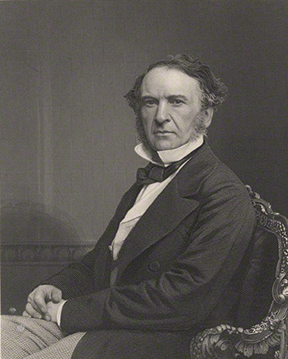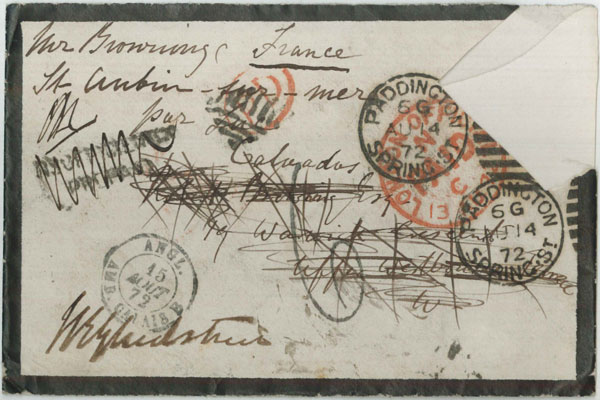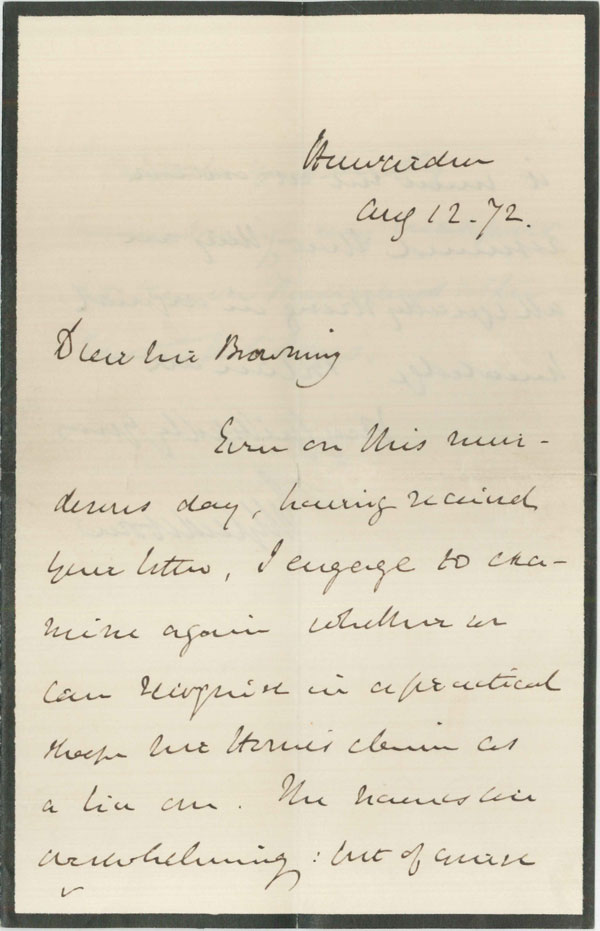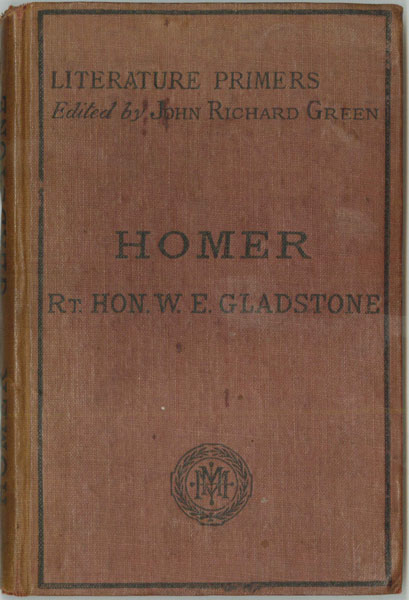Written by Melinda Creech, Graduate Assistant, Armstrong Browning Library
William Ewart Gladstone’s career lasted over sixty years. He served as Prime Minister four separate times, more than any other person; and he also served as Chancellor of the Exchequer four times. As Britain’s oldest Prime Minister, Gladstone resigned for the final time when he was eighty-four years old.
The Armstrong Browning Library holds seven Gladstone letters and eight of his books, one of which was in the Brownings’ library.
Letter from William Ewart Gladstone to Robert Browning. 12 August 1872.
Even on this murderous day, having received your letter, I engage to examine again whether we can recognize in a practical shape Mr Horne’s claim as a true one. The names are overwhelming: but of course it must not at once be assumed that they are all equally strong in original knowledge. I trust to your kindly remembering my breakfasts at ten on Tuesdays after Easter holidays.
This letters raises a number of questions. Why was it a murderous day? Does the mourning paper hold a clue? What are Mr. Horne’s claims? Why are the names overwhelming? What is the original knowledge in which they are not all equally strong? Did Browning attend Gladstone’s teas? Who forwarded the letter to Browning in Paris?
Gladstone and Robert Browning were both consumed with reading and studying Homer’s poetry. This is Browning’s copy of Gladstone’s publication on Homer. Browning’s signature is on the title page.







It’s possible that the “Mr. Horne” referred to in Gladstone’s letter is actually Daniel Dunglas Home, the popular and controversial medium and inspiration for Browning’s poem “Mr. Sludge the Medium.”
The “murderous day” undoubtedly refers to the execution of Charles Holmes on August 12, 1872, the day Gladstone wrote this letter.
Also, Gladstone’s breakfasts were on Thursdays, not Tuesdays.
Thank you so much for your insight into Gladstone’s letter! I will pass your comments onto Melinda, the author of this post.
Thanks for your reply, Jennifer. One more thing: The mourning stationery must be for the brother of Gladstone’s wife Catherine, the Rev. Henry Glynne, who died July 30, 1872 after being struck by lightning.
Hi, I’ve recently came into possession of a copy of the same book pictures, obviously not signed but I can’t find much information about it. is there any links you could share so I can find out about this book and its worth? Thanks
Thank you for asking Stacey. The Rare Books and Manuscripts section of the Association of College and Research Libraries which is a division of the American Library Association maintains this webpage to help individuals research their old books: https://rbms.info/yob/